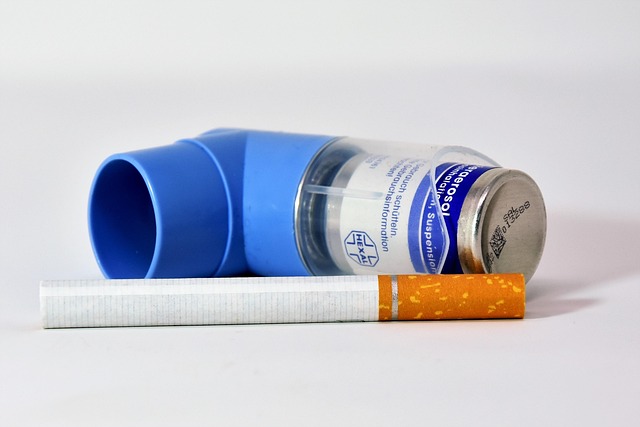Exploring COPD Injections: Importance, Side Effects, and New Treatment Options
COPD injections are drawing attention as part of treatment discussions. This article explains what the new shot for COPD is, why these injections are important, and the main side effects patients should be aware of to make informed decisions with their doctors.

What Is the New Shot for COPD
Recent developments in COPD treatment have introduced several injectable medications that target different aspects of the disease. Mepolizumab (Nucala) represents one significant advancement, particularly for patients with eosinophilic COPD. This medication works by targeting specific immune cells that contribute to airway inflammation. Additionally, some healthcare providers use injectable corticosteroids like methylprednisolone during severe COPD exacerbations when oral medications prove insufficient. These treatments are administered in clinical settings and require careful monitoring by healthcare professionals.
Why Getting COPD Injections Is Important
Injectable COPD treatments serve crucial roles in comprehensive disease management. For patients experiencing frequent exacerbations despite optimal inhaler therapy, these medications can provide additional control over inflammation and symptoms. Injections often deliver medications more directly into the bloodstream, potentially offering faster relief during acute episodes. They also provide alternative delivery methods for patients who struggle with proper inhaler technique or have difficulty coordinating breathing with medication administration. Some injectable treatments can reduce the frequency of hospital admissions and improve overall quality of life for carefully selected patients.
What Are the Main Side Effects of COPD Injections
COPD injections carry various potential side effects that patients should understand before treatment begins. Injectable corticosteroids may cause temporary increases in blood sugar levels, mood changes, difficulty sleeping, and increased appetite. Long-term use can lead to bone thinning, increased infection risk, and adrenal gland suppression. Biologic injections like mepolizumab may cause injection site reactions, headaches, back pain, and fatigue. Some patients experience flu-like symptoms following treatment. Serious but rare side effects include severe allergic reactions and increased susceptibility to infections. Healthcare providers carefully weigh these risks against potential benefits when recommending injectable treatments.
How Injections Differ from Traditional COPD Treatments
Injectable COPD medications operate differently from traditional inhalers and oral treatments in several key ways. While inhalers deliver medication directly to the lungs through inhalation, injections work systemically through the bloodstream to target underlying inflammatory processes. Traditional bronchodilator inhalers provide immediate symptom relief by opening airways, whereas many injectable treatments focus on long-term inflammation control and prevention of exacerbations. Inhalers require proper technique and timing, while injections are administered by healthcare professionals, ensuring accurate dosing. The frequency also differs significantly, with most injections given monthly or during acute episodes, compared to daily inhaler use.
Treatment Integration and Current Options
Injectable COPD treatments fit into current treatment protocols as complementary rather than replacement therapies. Healthcare providers typically prescribe these medications alongside existing inhaler regimens and oral treatments for patients with specific clinical presentations. Biologic injections like mepolizumab are reserved for patients with elevated eosinophil counts who continue experiencing frequent exacerbations despite optimal standard therapy. Injectable corticosteroids serve as rescue treatments during severe exacerbations when hospitalization becomes necessary. The integration requires careful patient selection, regular monitoring, and coordination between pulmonologists and primary care providers to ensure optimal outcomes.
| Treatment Type | Provider/Setting | Administration Frequency | Primary Purpose |
|---|---|---|---|
| Mepolizumab (Nucala) | Specialty clinics | Every 4 weeks | Eosinophilic COPD management |
| Injectable corticosteroids | Hospitals/urgent care | As needed during exacerbations | Acute symptom control |
| Benralizumab (potential) | Research centers | Monthly (investigational) | Severe COPD with eosinophilia |
Treatment costs and availability may vary significantly based on insurance coverage, geographic location, and healthcare provider networks. Independent research and consultation with healthcare providers is recommended for current pricing information.
The landscape of COPD treatment continues evolving as researchers develop new injectable therapies and refine existing protocols. These medications represent important additions to the treatment arsenal, particularly for patients with severe disease or specific inflammatory patterns. However, they work best as part of comprehensive treatment plans that include traditional therapies, lifestyle modifications, and regular medical monitoring. Patients considering injectable COPD treatments should discuss their individual circumstances, potential benefits, and risks with their healthcare providers to determine the most appropriate treatment approach for their specific situation.
This article is for informational purposes only and should not be considered medical advice. Please consult a qualified healthcare professional for personalized guidance and treatment.




